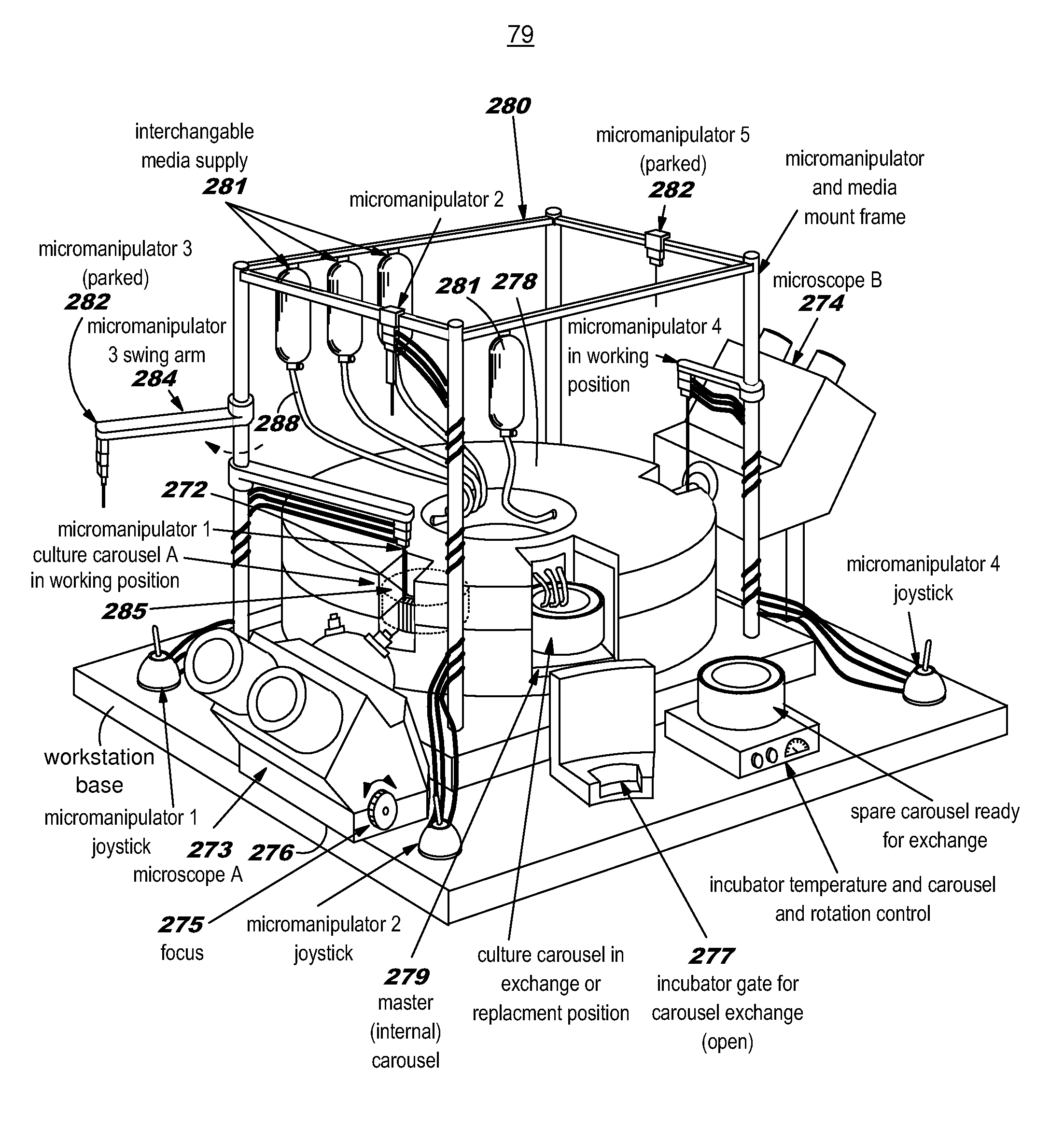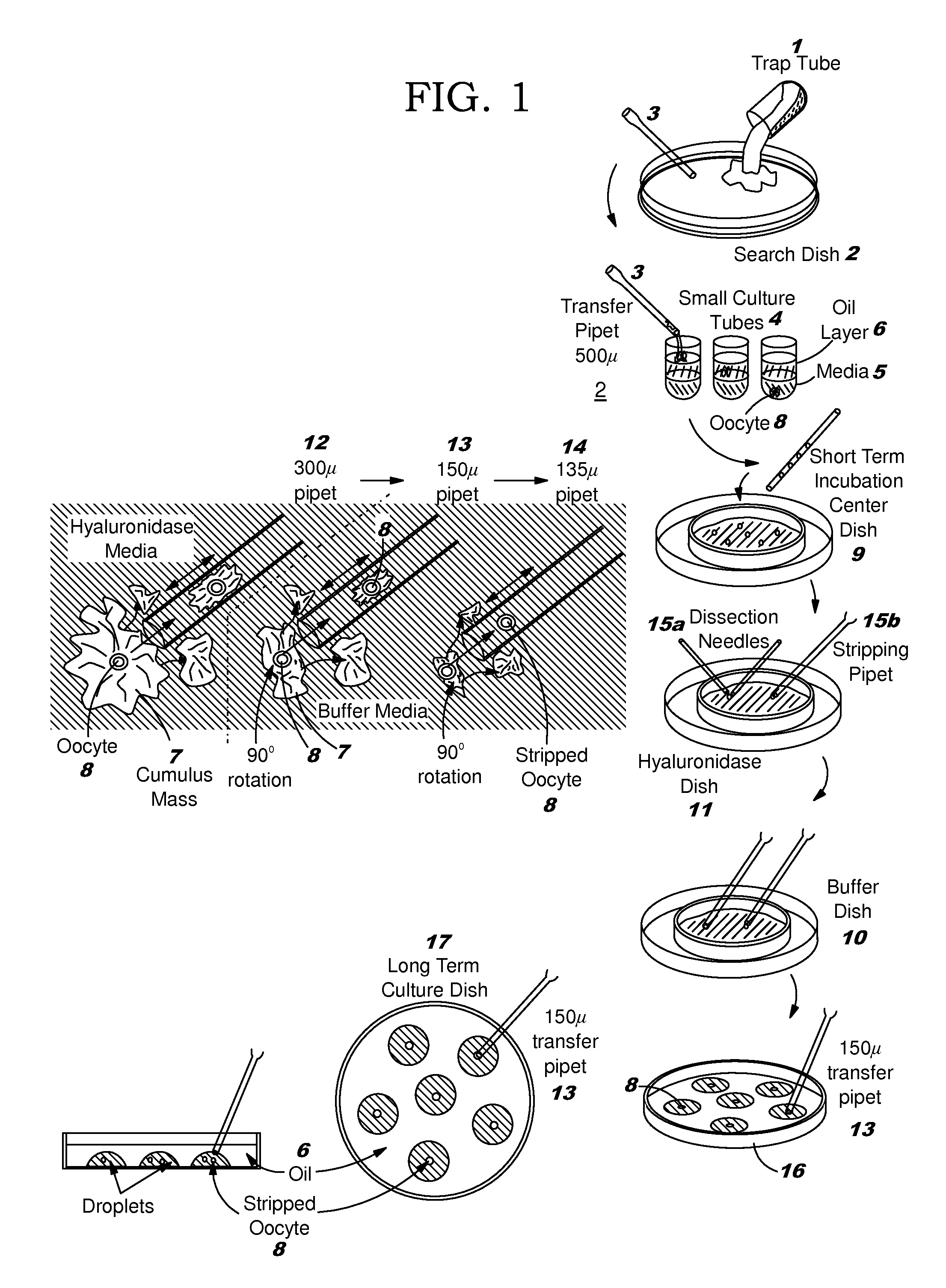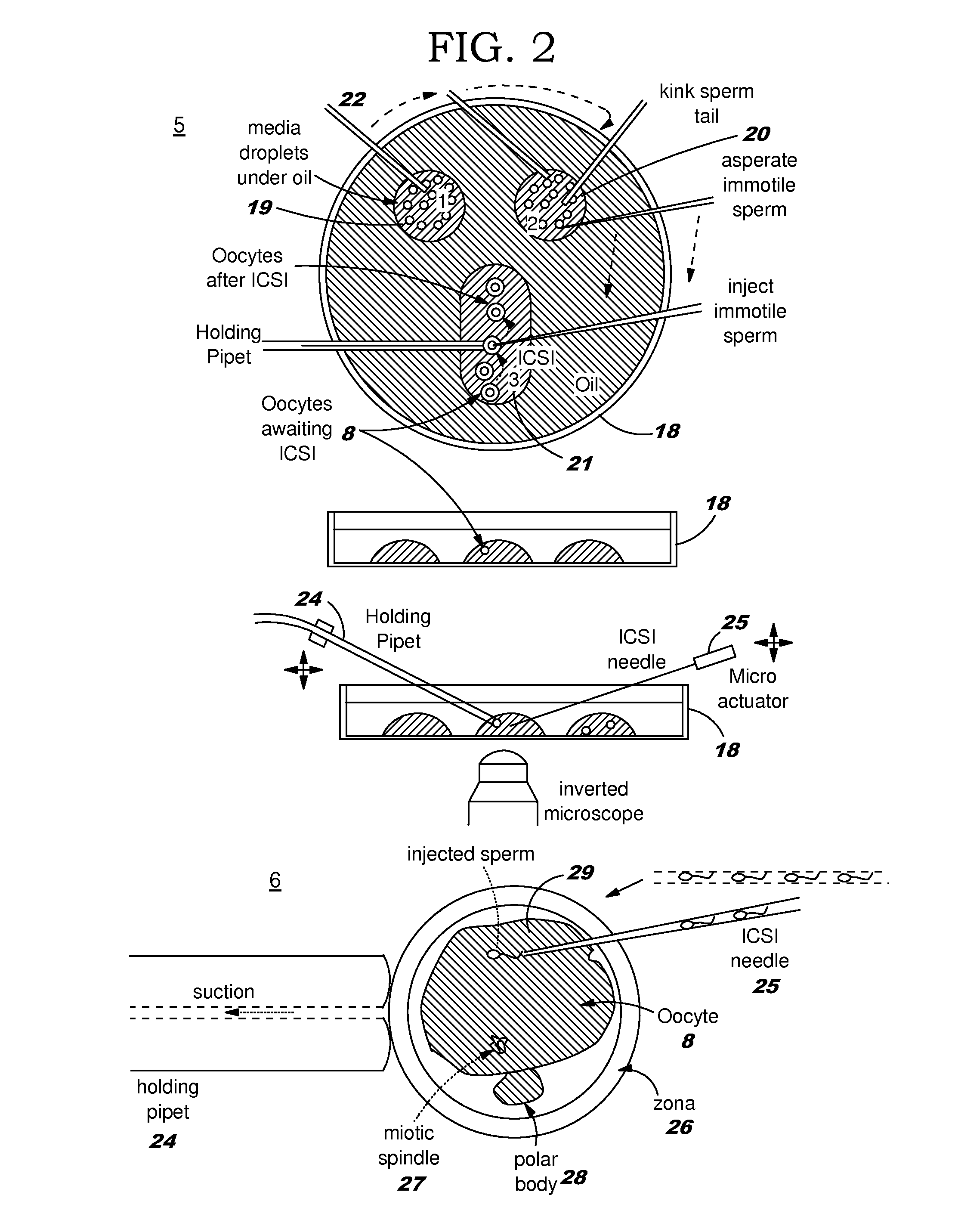Microfluidic Embryo and Gamete Culture Systems
- Summary
- Abstract
- Description
- Claims
- Application Information
AI Technical Summary
Benefits of technology
Problems solved by technology
Method used
Image
Examples
Embodiment Construction
[0148]A more detailed description of components of a microfluidic IVF system is now provided.
[0149]The first component is a sperm separation system. The goal of the microfluidic sperm separation system is purification of sperm from semen and separation of normal sperm from those with chromosomal and morphological abnormalities is. If sufficient separation resolution is achieved by the system then simple inexpensive separation of X and Y chromosome sperm may be feasible, allowing sex determination of offspring in fertility patients and in commercial livestock.
[0150]A fractional distillation system permits exchange of sperm across laminar flow media streams along redundant parallel channels. Such a system may utilize either a passive gradient generator or an active gradient generator. The separation network is a “chicken-wire” configuration of adjacent, communicating laminar flow microchannels. Network gradient examples include albumin concentration gradients, chemotactic agents, pH g...
PUM
 Login to View More
Login to View More Abstract
Description
Claims
Application Information
 Login to View More
Login to View More - R&D
- Intellectual Property
- Life Sciences
- Materials
- Tech Scout
- Unparalleled Data Quality
- Higher Quality Content
- 60% Fewer Hallucinations
Browse by: Latest US Patents, China's latest patents, Technical Efficacy Thesaurus, Application Domain, Technology Topic, Popular Technical Reports.
© 2025 PatSnap. All rights reserved.Legal|Privacy policy|Modern Slavery Act Transparency Statement|Sitemap|About US| Contact US: help@patsnap.com



